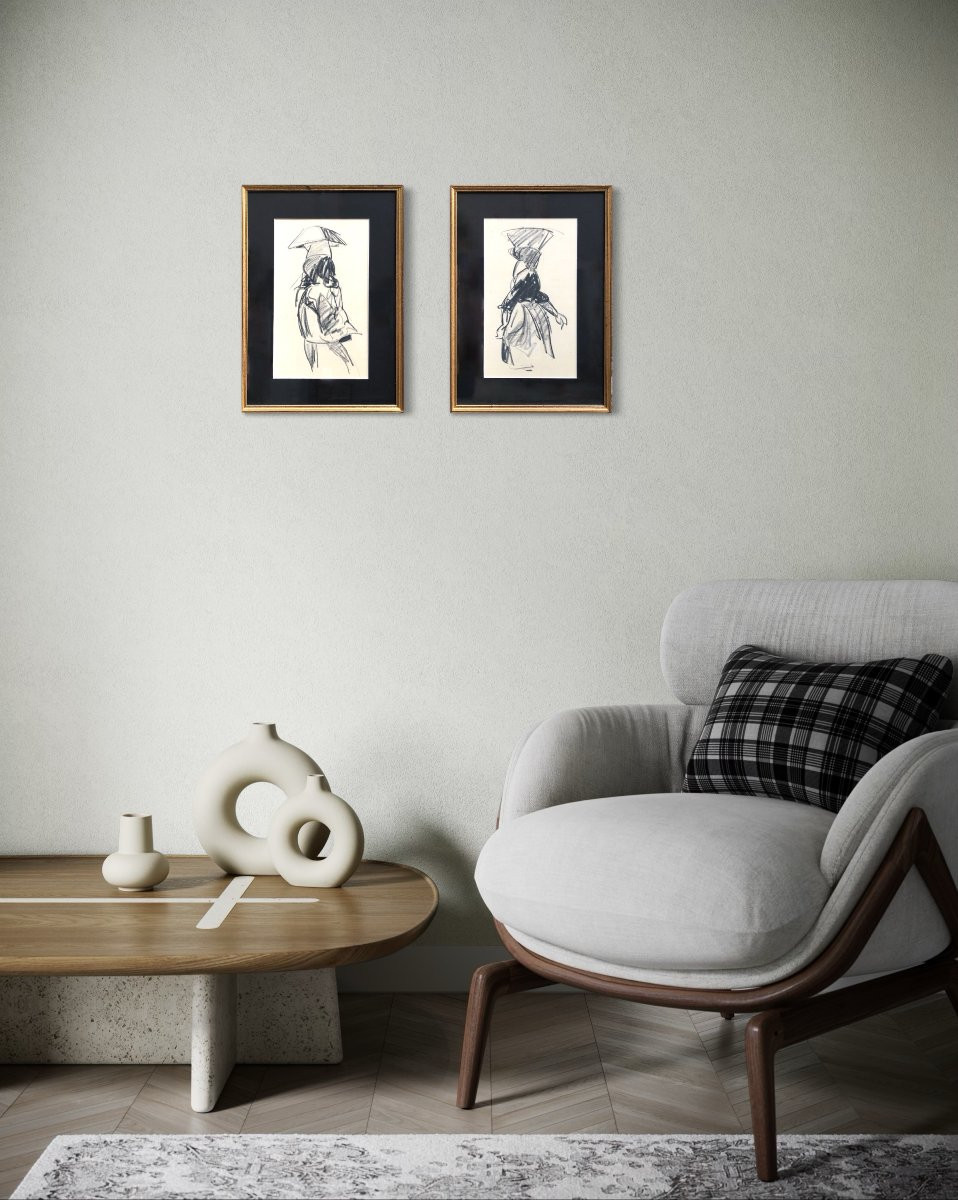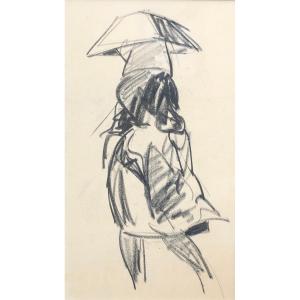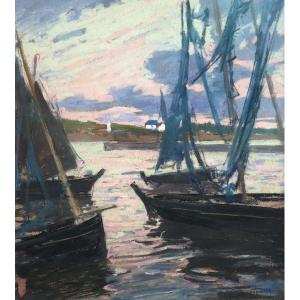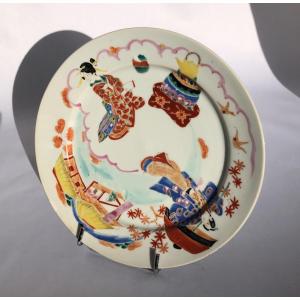unframed 34 x 20 cm,
framed 48.5 x 34.5 cm.
Charcoal, unsigned, attributed to René-Yves Creston.
This work will be on display at the Quimper Antiques Fair from November 7th to 9th, 2025.
René-Yves Creston (1898-1964):
The man's work is immense: painter, ceramicist, interior designer, illustrator, decorator, ethnologist specializing in the maritime world, sailor, and simply an activist for the emancipation of the Breton people. The strength and originality of this multifaceted work are closely linked to that of a cohort of artists who founded and led, with him, the artistic and social movement "Ar Seiz Breur" (The Seven Brothers) between 1923 and 1947. It marks a turning point in the decorative arts in Brittany. A man of strong character, Creston did not hesitate to join the Resistance in August 1940 within the Musée de l'Homme network and to set up an intelligence group in Saint-Nazaire whose information proved invaluable in preparing for the British raid of October 28, 1942. He wrote for Breiz Atao and helped publish the art journals Kornog and Keltia. He moved from wood engraving to watercolor and oil painting. From 1925, he worked for the Henriot factory in Quimper. Among his works are a sculpture of Nominoë and La paludière à la gède. He illustrated Youenn Drezen's book Kan da Gornog, for which he invented a new typeface. This native of Saint-Nazaire left behind powerful wood engravings to illustrate his neighbor Alphonse de Chateaubriant's masterpiece, "La Brière." René-Yves Creston, armed with his conviction, pencils, and brushes, waged a determined battle until his very last breath to ensure that Brittany would not disappear from maps and school textbooks. As the magazine Le Chasse-Marée summarized in an article dedicated to him in 1995, "he fought against oblivion with the supreme elegance of those who know how to efface themselves before their subject."
































 Le Magazine de PROANTIC
Le Magazine de PROANTIC TRÉSORS Magazine
TRÉSORS Magazine Rivista Artiquariato
Rivista Artiquariato